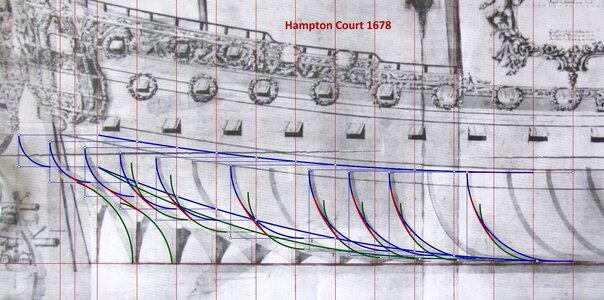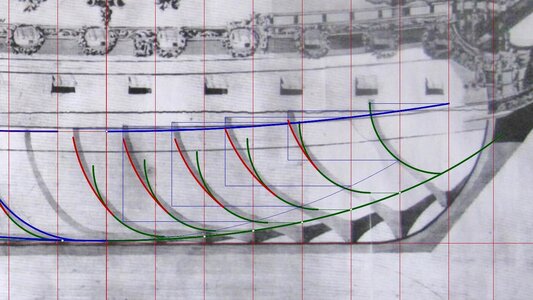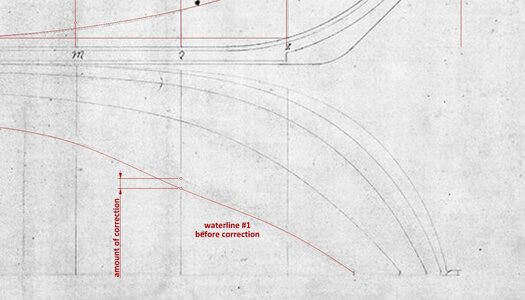.
At the request of my friend Martes, I have just carried out a quick verification of the design method used to draw the frame contours on the Wilton House ship plan (strictly speaking not actually identified with any certainty). Rather as expected, this rapid examination yielded no surprises – the design is a fairly standard implementation of the now well-known English method of forming the frames in perhaps its simplest form: fixed radius bilge sweeps (green), fixed radius futtock sweeps (red), variable radius (lower) breadth sweeps brought to and tangent to the level of the rising line (blue). No sign of the use of additional arcs to smooth the hull surface, such as in Ö3 model (Naseby 1655/Riksäpplet 1663) or in the anonymous design of the 6th rate ship, as shown in other threads on this forum.
I don't normally show these kinds of quick inventories, especially if the results don't add anything new, but maybe someone will be interested in what they look like.
Copies of the plan kindly provided for examination by Willibald Meischl (@schifferlbauer).
.
Last edited:








